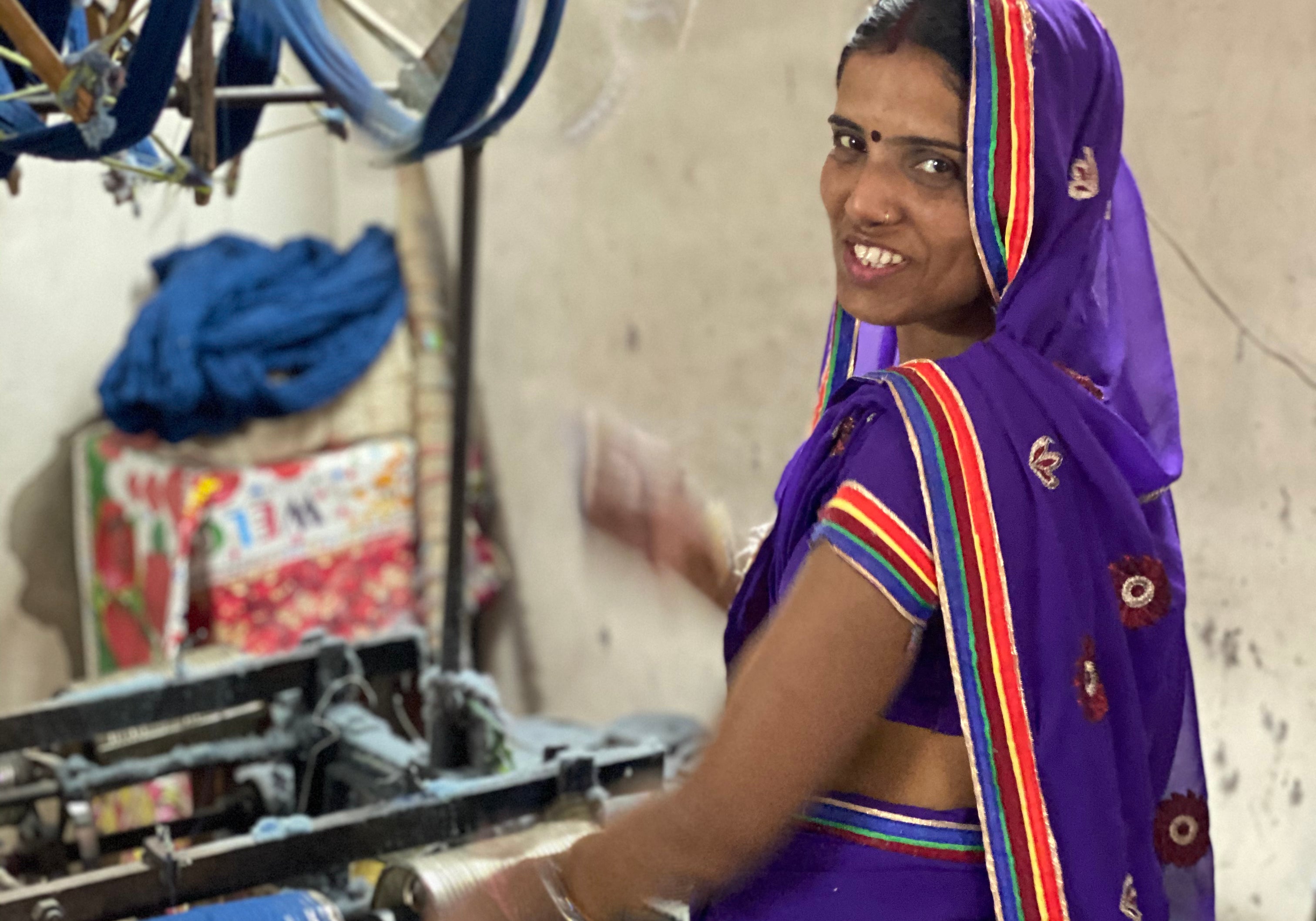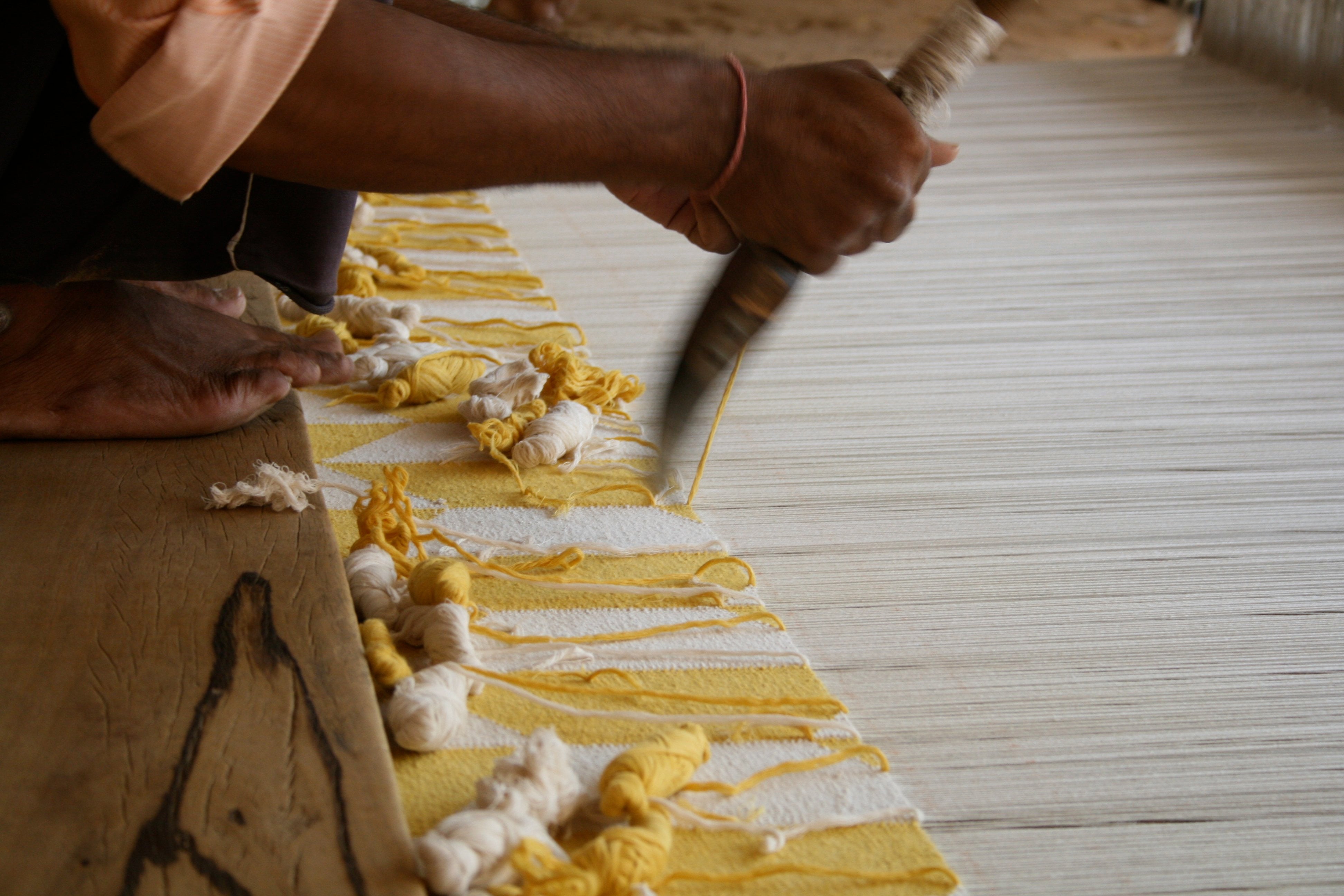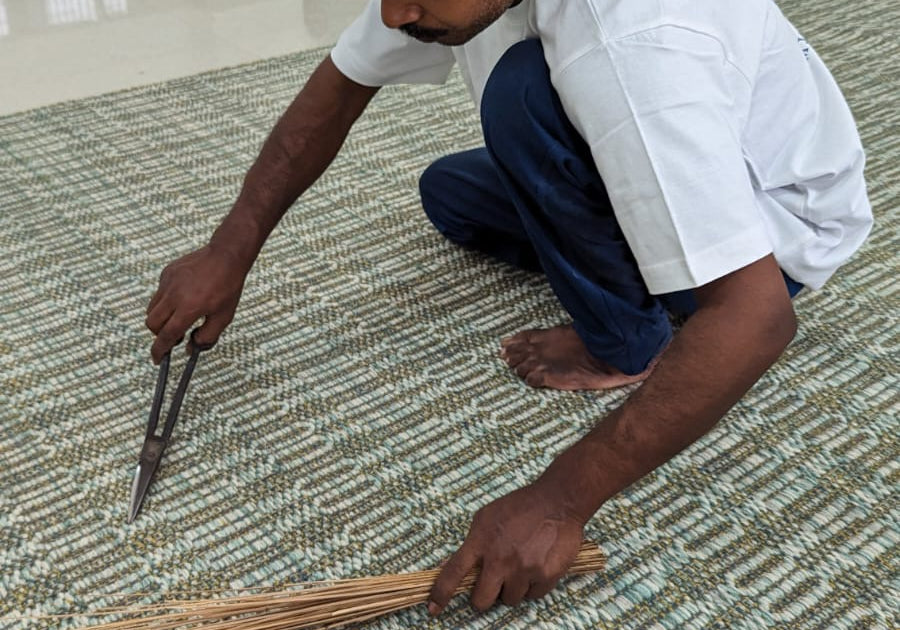All our rugs are hand made by skilled artisans whose fathers and forefathers have woven before them. Each of our rugs are carefully and lovingly created from start to finish. Each aspect of the process is done by hand from the dyeing of the yarn, to the drying, spinning, weaving and finishing. None of our rugs are machine made in factories.
THE PROCESS

Spinning
This is usually done by the village women, where the cotton or wool is spun to make yarn.

Dyeing
We work with the best dye masters in both Uttar Pradesh and in Rajasthan. They ensure that the colours match the pantone references, paint samples or fabric swatches. All our dyeing is done by hand and while it's not an exact science the results are extremely accurate.

Drying The Dyed Yarn
Once the yarn is dyed it is left to dry naturally in the sun. It's dried everywhere from rooftops to rather rudimentary wooden drying stands in fields that are scattered around the hamlets where our dye masters live.

Plying
The process of creating a strong thread yarn which is then spooled to make the even thread which the weavers then use on the loom.

Loom Preparation
This is probably one of the most technical parts of the process where the warp is made and ready for weaving. It’s vital that the tension of the loom is correct in order to create the perfect rug. For some of our larger rugs we make special looms to accommodate rugs up to 54ft long and 32ft wide.

Weaving
The process of marrying the warp with the weft. Most of the rugs we produce are woven by three or more men who sit side by side and weave in harmony. Our larger rugs can have up to six or 8 men weaving at a time. In other villages we have married couples weaving our cotton dhurries on their home looms.

Washing
After weeks of weaving in the rural hamlets the rugs need to be washed, which is all done by hand. The lighter pastel rugs are washed after sundown to ensure the colours are not affected by the strong midday sun. They are then left to dry in the shade.

Finishing
The Dhurrie is then checked and any stray threads are clipped to ensure a smooth finish.

Binding And Trims
The rug is then bound and the ends are either platted or created into pom-poms or fancy tassels or just bound in the traditional way. All of this is completed by hand.

Quality Control
All of our rugs are checked and rechecked to ensure we deliver the finest quality artisan-made product to your home. Each rug will have slight imperfections but this adds to the authenticity and beauty of owning a hand made product.
